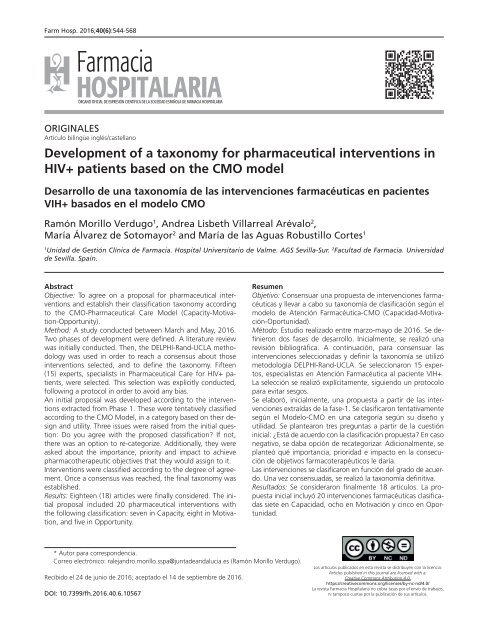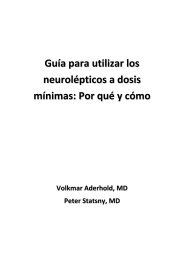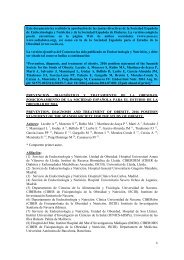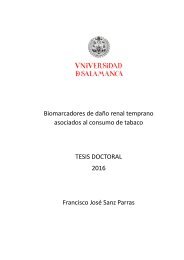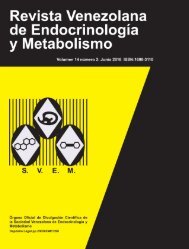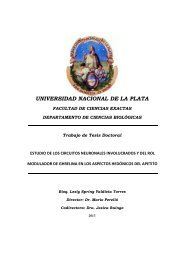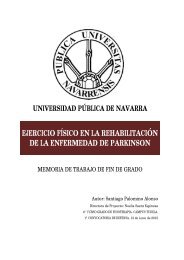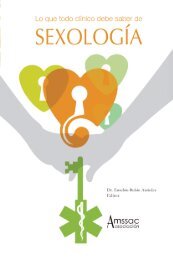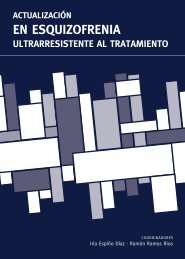Noviembre-Diciembre
156_v40n6(1)
156_v40n6(1)
Create successful ePaper yourself
Turn your PDF publications into a flip-book with our unique Google optimized e-Paper software.
Farm Hosp. 2016;40(6):544-568<br />
ORIGINALES<br />
Artículo bilingüe inglés/castellano<br />
Development of a taxonomy for pharmaceutical interventions in<br />
HIV+ patients based on the CMO model<br />
Desarrollo de una taxonomía de las intervenciones farmacéuticas en pacientes<br />
VIH+ basados en el modelo CMO<br />
Ramón Morillo Verdugo 1 , Andrea Lisbeth Villarreal Arévalo 2 ,<br />
María Álvarez de Sotomayor 2 and María de las Aguas Robustillo Cortes 1<br />
1<br />
Unidad de Gestión Clínica de Farmacia. Hospital Universitario de Valme. AGS Sevilla-Sur. 2 Facultad de Farmacia. Universidad<br />
de Sevilla. Spain.<br />
Abstract<br />
Objective: To agree on a proposal for pharmaceutical interventions<br />
and establish their classification taxonomy according<br />
to the CMO-Pharmaceutical Care Model (Capacity-Motivation-Opportunity).<br />
Method: A study conducted between March and May, 2016.<br />
Two phases of development were defined. A literature review<br />
was initially conducted. Then, the DELPHI-Rand-UCLA methodology<br />
was used in order to reach a consensus about those<br />
interventions selected, and to define the taxonomy. Fifteen<br />
(15) experts, specialists in Pharmaceutical Care for HIV+ patients,<br />
were selected. This selection was explicitly conducted,<br />
following a protocol in order to avoid any bias.<br />
An initial proposal was developed according to the interventions<br />
extracted from Phase 1. These were tentatively classified<br />
according to the CMO Model, in a category based on their design<br />
and utility. Three issues were raised from the initial question:<br />
Do you agree with the proposed classification? If not,<br />
there was an option to re-categorize. Additionally, they were<br />
asked about the importance, priority and impact to achieve<br />
pharmacotherapeutic objectives that they would assign to it.<br />
Interventions were classified according to the degree of agreement.<br />
Once a consensus was reached, the final taxonomy was<br />
established.<br />
Results: Eighteen (18) articles were finally considered. The initial<br />
proposal included 20 pharmaceutical interventions with<br />
the following classification: seven in Capacity, eight in Motivation,<br />
and five in Opportunity.<br />
Resumen<br />
Objetivo: Consensuar una propuesta de intervenciones farmacéuticas<br />
y llevar a cabo su taxonomía de clasificación según el<br />
modelo de Atención Farmacéutica-CMO (Capacidad-Motivación-Oportunidad).<br />
Método: Estudio realizado entre marzo-mayo de 2016. Se definieron<br />
dos fases de desarrollo. Inicialmente, se realizó una<br />
revisión bibliográfica. A continuación, para consensuar las<br />
intervenciones seleccionadas y definir la taxonomía se utilizó<br />
metodología DELPHI-Rand-UCLA. Se seleccionaron 15 expertos,<br />
especialistas en Atención Farmacéutica al paciente VIH+.<br />
La selección se realizó explícitamente, siguiendo un protocolo<br />
para evitar sesgos.<br />
Se elaboró, inicialmente, una propuesta a partir de las intervenciones<br />
extraídas de la fase-1. Se clasificaron tentativamente<br />
según el Modelo-CMO en una categoría según su diseño y<br />
utilidad. Se plantearon tres preguntas a partir de la cuestión<br />
inicial: ¿Está de acuerdo con la clasificación propuesta? En caso<br />
negativo, se daba opción de recategorizar. Adicionalmente, se<br />
planteó qué importancia, prioridad e impacto en la consecución<br />
de objetivos farmacoterapéuticos le daría.<br />
Las intervenciones se clasificaron en función del grado de acuerdo.<br />
Una vez consensuadas, se realizó la taxonomía definitiva.<br />
Resultados: Se consideraron finalmente 18 artículos. La propuesta<br />
inicial incluyó 20 intervenciones farmacéuticas clasificadas<br />
siete en Capacidad, ocho en Motivación y cinco en Oportunidad.<br />
* Autor para correspondencia.<br />
Correo electrónico: ralejandro.morillo.sspa@juntadeandalucia.es (Ramón Morillo Verdugo).<br />
Recibido el 24 de junio de 2016; aceptado el 14 de septiembre de 2016.<br />
DOI: 10.7399/fh.2016.40.6.10567<br />
Los artículos publicados en esta revista se distribuyen con la licencia:<br />
Articles published in this journal are licensed with a:<br />
Creative Commons Attribution 4.0.<br />
https://creativecommons.org/licenses/by-nc-nd/4.0/<br />
La revista Farmacia Hospitalaria no cobra tasas por el envío de trabajos,<br />
ni tampoco cuotas por la publicación de sus artículos.


